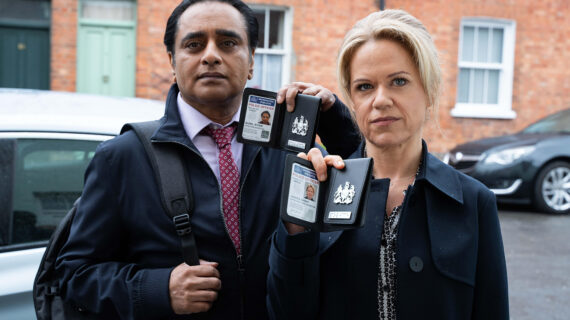Frederica Freyberg:
If you are among the more than one million voters in Wisconsin who has already requested one, your absentee ballot should be in the mail to you. That’s because election clerks worked overtime to get them out by Thursday’s deadline. But that number, already a million, is going to be an election like no other. For facts and figures, we turn to the administrator of the Wisconsin Elections Commission, Meagan Wolfe, and thanks very much for being here.
Meagan Wolfe:
Thanks so much for having me.
Frederica Freyberg:
So a million absentee ballots have already been requested. What are your projections about how many in total may vote absentee in Wisconsin for the November 3rd election?
Meagan Wolfe:
Well, it’s difficult to really predict because like you said, this will truly be an election unlike any other. So we can look to previous elections this year for some guidance. In the April election, we saw that about 60% of voters that participated participated using absentee by mail. In the August election, the August statewide election, we see that number go closer to 80%. And so we don’t know exactly what the voter behavior will be for the November election, but we know that we must be prepared for a very high volume in all of the three statutorily available options for voters to cast their ballot.
Frederica Freyberg:
But given the high numbers of absentee ballots, when should we expect election results?
Meagan Wolfe:
Well, our local election officials are also working to prepare their systems to accommodate the new volume of absentee ballots. State law says our local election clerks cannot begin processing, tabulating those absentee votes until 7:00 a.m. on Election Day. So they really do have a very small window of time to process all those ballots. That said, they’re preparing in all of our jurisdictions to put more resources towards that process. But I think it’s incredibly important to add to this conversation that election night results are always unofficial. It takes nearly a month in every election to certify the official results and the official winners of a contest.
Frederica Freyberg:
So it seems likely that we’d be looking sometime past the evening of November 3rd for even those unofficial results. But I want to move along. President Trump told people to test the system by voting twice, once by absentee ballot and then again at the polling place. What should voters know about that advice?
Meagan Wolfe:
Sure. So if you receive an absentee ballot by mail, so if that’s the method that you choose, you do have some options. If you don’t send that ballot back, voters are still eligible to cast a ballot and to vote at the polls on Election Day and essentially cancel their absentee by mail. However, if you have returned your absentee ballots, you are not eligible to vote at the polls on Election Day. And your local election official will of course have that information. There’s a watermark on the poll book that indicates the status of your absentee ballot. So you would not be allowed to cast an absentee ballot on Election Day if you had returned your absentee. But you certainly shouldn’t try that either, because if you do attempt that, it could be referred to a district attorney and considered to be a form of voter fraud.
Frederica Freyberg:
The president also warns of massive fraud as a result of absentee voting. What are the facts on that in Wisconsin?
Meagan Wolfe:
So after elections, we are required to produce a report that shows instances of voter fraud. And our commission just approved the most recent report, which takes a look at the elections already here in 2020, as well as some of the previous elections last year. And over that course of that reporting period, so we’re required to do this every year, we saw about 20 instances statewide. And, again, that covers the gamut of more than a year worth of elections in the state of Wisconsin.
Frederica Freyberg:
There are concerns about the U.S. Postal Service and its ability to deliver ballots on time that being as of the close of voting on November 3rd. What should people who want to vote that way do?
Meagan Wolfe:
So if you’re interested in voting by absentee ballot by mail, make sure you’re leveraging the time that we have before Election Day. So all absentee ballots must be received by your local election official no later than 8:00 p.m. on Election Day. And the USPS has told us and has told us for a number of years now that each journey of your ballot can take up to a week. So it can take up to a week for that ballot to get to you and up to a week for it to get back to your local election official. So please plan accordingly. If you’re going to use that option, make your request right away. Once you receive your ballot, return it right away. If you are close to the deadline, there are other options to return your ballot, including in-person drop-off at your local election official’s office. And many of your communities may also have drop boxes locations where you can also drop off those absentee ballots.
Frederica Freyberg:
One issue in the midst of COVID-19 is that nursing home residents won’t see election deputies in their facilities to help them complete their ballot because you’ve said you feel it’s just too risky. What are those residents to do if they cannot complete their ballots without help?
Meagan Wolfe:
Any state of Wisconsin elector is allowed to choose an assister of their choice. So this could be someone in those care facilities of their choosing could assist them. We’ve heard of some residents that may utilize things like Facetime or Skype to communicate with a loved one to help them, assist them in that process. So there are options available to those voters. We’ve also sent out extensive training to those care facilities so their residents as well as their staff understands how to assist a voter and what they’re not able to do in terms of influencing a voter’s options.
Frederica Freyberg:
All right. We leave it there. Meagan Wolfe, thanks you very much for joining us in the midst of this very busy time.
Meagan Wolfe:
Of course. Thank you.
Search Episodes
Related Stories from PBS Wisconsin's Blog

Donate to sign up. Activate and sign in to Passport. It's that easy to help PBS Wisconsin serve your community through media that educates, inspires, and entertains.
Make your membership gift today
Only for new users: Activate Passport using your code or email address
Already a member?
Look up my account
Need some help? Go to FAQ or visit PBS Passport Help
Need help accessing PBS Wisconsin anywhere?

Online Access | Platform & Device Access | Cable or Satellite Access | Over-The-Air Access
Visit Access Guide
Need help accessing PBS Wisconsin anywhere?

Visit Our
Live TV Access Guide
Online AccessPlatform & Device Access
Cable or Satellite Access
Over-The-Air Access
Visit Access Guide
 Passport
Passport

















Follow Us